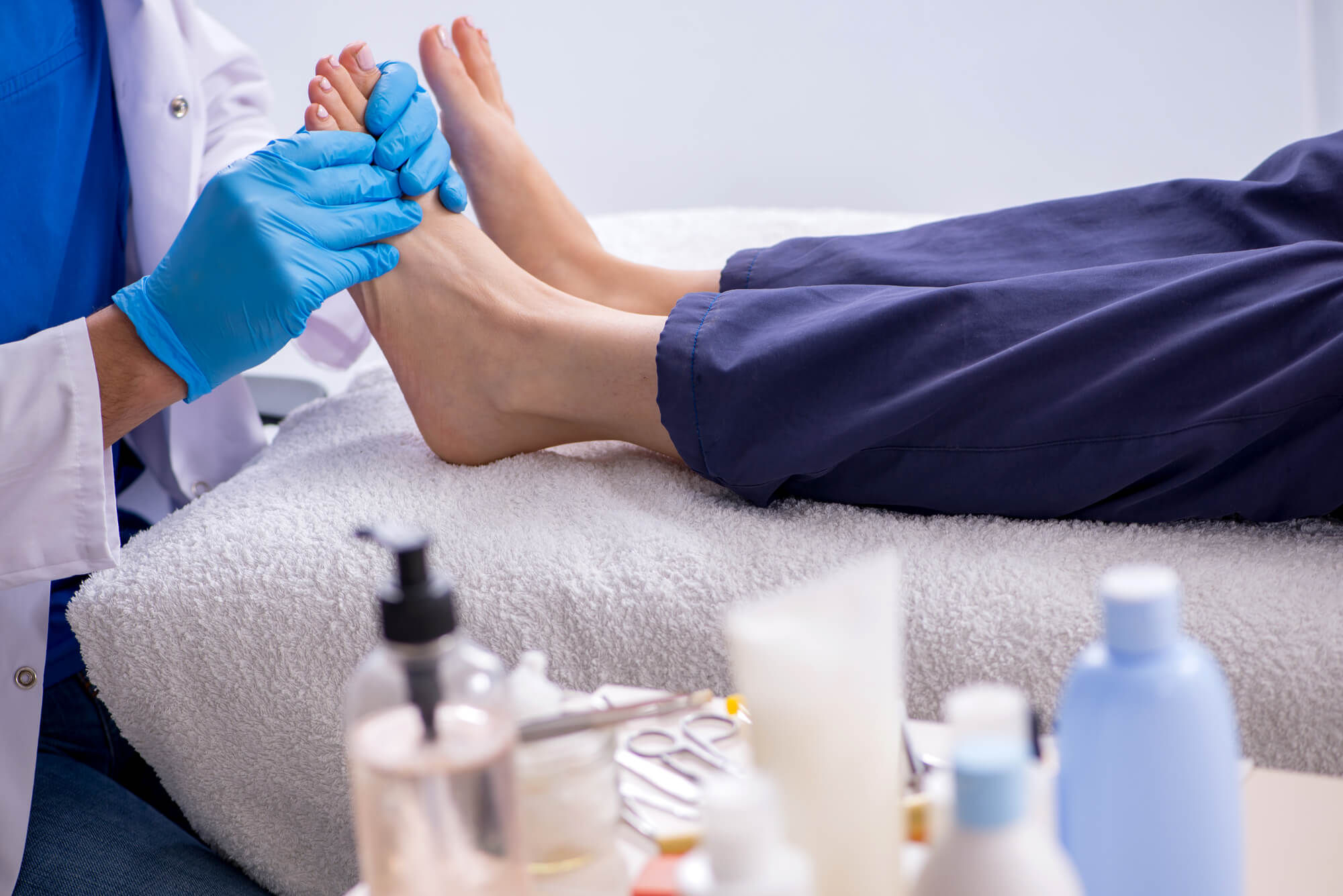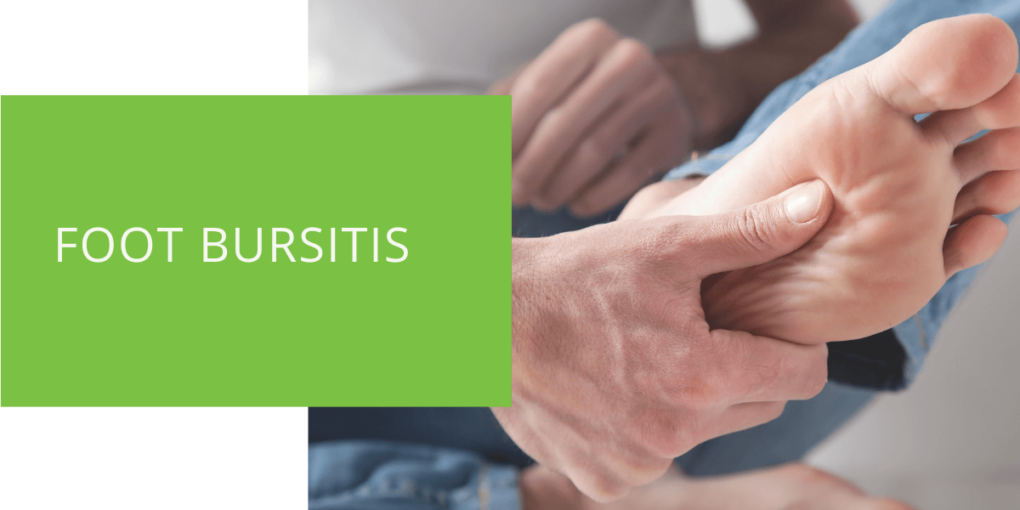Foot Bursitis: Causes, Symptoms & Treatment
Foot bursitis is a painful condition when the small fluid-filled sacs (bursae) in the foot become inflamed. These bursae are located throughout the foot and cushion, reducing friction between the bones and tendons. When bursitis develops in the foot, it can cause pain, tenderness, swelling, and a limited range of motion.
While anyone can develop foot bursitis, it is more common in people who engage in high-impact activities or wear tight or poorly-fitting shoes. If you are experiencing foot pain and suspect you may have bursitis, it is important to see a podiatrist for a proper diagnosis and treatment plan. This article will delve into the causes, symptoms, treatment options for foot bursitis, and ways to prevent it.
Causes of Foot Bursitis
There are several common causes of foot bursitis, including:
- Overuse and Repetitive Strain: Engaging in activities that put repetitive strain on the foot and ankle, such as running or jumping, can lead to the development of bursitis. This is because the bursae in the foot are subjected to constant friction and pressure, which can cause them to become inflamed.
- Injury or Trauma: An injury or trauma to the foot, such as a fall or a blow to the ankle, can also cause bursitis to develop. In these cases, the bursae become inflamed due to the injury.
- Certain Medical Conditions: Certain medical conditions, such as rheumatoid arthritis and gout, can increase the risk of developing bursitis. This is because these conditions cause inflammation throughout the body, including in the bursae of the foot.

Symptoms of Foot Bursitis
The main symptoms of foot bursitis are pain and tenderness in the affected area, swelling, and limited range of motion in the foot. The pain is typically worse when the foot is moved or touched and may be accompanied by a feeling of warmth in the affected area.
In some cases, foot bursitis can also cause fever, redness, and fatigue, especially if an underlying medical condition causes it.
Treatment Options for Foot Bursitis
The treatment plan for foot bursitis will depend on the severity of the condition and the underlying cause. Here are some common treatment options:
- Rest and Ice: One of the most effective ways to reduce the inflammation and pain associated with foot bursitis is to rest the affected foot and apply ice to the affected area. This can help to reduce swelling and numb the pain.
- Pain Medication and Anti-Inflammatory Drugs: Over-the-counter pain medication and anti-inflammatory drugs, such as ibuprofen and naproxen, can also help to reduce inflammation and relieve pain. These medications should be taken as directed by a doctor or pharmacist.
- Physical Therapy and Stretching Exercises: Physical therapy and stretching exercises can help to improve the range of motion and strengthen the muscles in the foot and ankle. This can be especially helpful for people who have developed bursitis due to overuse or repetitive motion.
- Surgical Intervention: In severe cases of foot bursitis, a doctor may recommend surgical intervention to remove the inflamed bursa. This is typically done as a last resort and is only necessary in cases where conservative treatment options have not successfully relieved the symptoms.

Preventing Foot Bursitis
There are several steps you can take to prevent the development of foot bursitis:
- Proper Warm-Up Before Physical Activity: It is important to warm up properly before engaging in any physical activity to reduce the risk of injury and overuse. This can include stretching and light cardiovascular activity.
- Wearing Proper Footwear: Wearing shoes that fit well and provide proper support can help to reduce the risk of bursitis. Avoiding high heels and other shoes that put pressure on the toes and balls of the feet can also help.
- Maintaining a Healthy Weight: Being overweight can increase the risk of bursitis, putting additional strain on the feet and ankles. Maintaining a healthy weight can help to reduce the risk of bursitis and other foot conditions.
- Avoiding High-Impact Activities: If you are prone to bursitis or have a history of the condition, it may be best to avoid high-impact activities that put a lot of strain on the feet and ankles.

Conclusion
Foot bursitis is a common condition that causes pain and inflammation in the foot and ankle. It is typically caused by overuse, injury, or certain medical conditions and can be treated with rest, ice, pain medication, and physical therapy. To prevent the development of foot bursitis, it is important to warm up before physical activity, wear proper footwear, maintain a healthy weight, and avoid high-impact activities if prone to bursitis. If you are experiencing foot pain and suspect you may have bursitis, it is important to see a podiatrist for a proper diagnosis and treatment plan.
FAQ
How do I get rid of bursitis in my foot?
There are several treatment options for getting rid of bursitis in the foot, including rest and ice, pain medication and anti-inflammatory drugs, physical therapy and stretching exercises, and in severe cases, surgical intervention. It is important to see a podiatrist for a proper diagnosis and treatment plan, as the best course of action will depend on the severity of the condition and the underlying cause.
What are the symptoms of bursitis in the foot?
The main symptoms of bursitis in the foot are pain and tenderness in the affected area, swelling, and limited range of motion. The pain is typically worse when the foot is moved or touched and may be accompanied by a feeling of warmth in the affected area. Bursitis in the foot can cause fever, redness, and fatigue, especially if an underlying medical condition causes it.
How do you know if you have bursitis in your foot?
If you are experiencing pain and tenderness in the foot, swelling, and limited range of motion, you may have bursitis in the foot. It is important to see a podiatrist for a proper diagnosis, as other conditions can also cause these symptoms. The podiatrist will perform a physical examination of the foot and may also order imaging tests, such as an X-ray or MRI, to confirm the diagnosis.

